A Thousand Words on Every Page
Graphic Novels of Winter 2017
A picture is worth a thousand words, so they say, which must make every graphic novel longer than a Tolstoy novel. But the purpose of these pictures is to convey a depth in appearance. Graphic novels can translate facial expression, landscape, and minute detail from words to art, which can make for an invaluable reading experience. These graphic novels from our Winter 2017 issue offer that experience.
Flying Couch
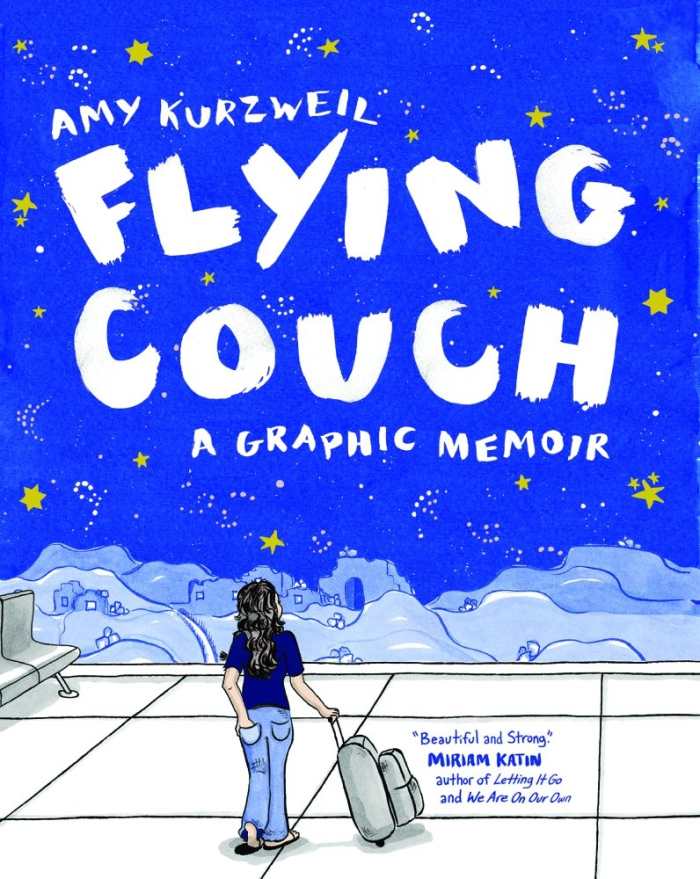
Amy Kurzweil
Black Balloon Publishing
Softcover $18.95 (288pp)
978-1-936787-33-3
Amy Kurzweil’s Flying Couch: A Graphic Memoir is a bit unusual as memoirs go—though it is the story of her life thus far, Kurzweil’s account is largely absent of the kind of physical or emotional traumas that too often seem to be a requirement in memoirs. She’s honest about her efforts to live a life that’s independent but that still incorporates her family, including her mother, who is a psychotherapist, and her grandmother Bubbe, a Holocaust survivor. Kurzweil tells the stories of all three, but Bubbe’s harrowing stories of survival naturally dominate the book, with an immediacy that Kurzweil’s own life lacks. In recognizing this, however, Kurzweil is able to merge her grandmother’s tale into a larger work about a young woman finding her way in the world. Kurzweil also uses humor throughout Flying Couch, which helps to provide a common thread amid the poignant, the sublime, and the commonplace.
Kurzweil’s black-and-white art is expressive, and she uses creative touches like a Chutes-and-Ladders-inspired game board to illustrate the potential benefits and hazards of life in New York City, and plenty of drawings from maps and photographs.
The book’s title is a nod to the infamous “psychotherapist’s couch,” and as Kurzweil takes the influences of her mother’s training and her grandmother’s experiences, and reflects on her own life, it’s easy to relate to her efforts to find individuality without casting off the love and protection of family. Young people, in particular, should find Flying Couch an enjoyable and edifying read.
PETER DABBENE (November 28, 2016)
Bad Machinery Volume 6
he Case of the Unwelcome Visitor
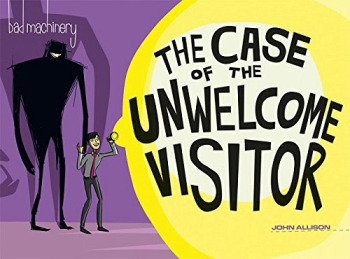
John Allison
Oni Press
Softcover $19.99 (144pp)
978-1-62010-351-7
Buy: Local Bookstore (Bookshop)
John Allison’s acclaimed Bad Machinery series of graphic novels continues with The Case of the Unwelcome Visitor. The book follows Allison’s six early-teen protagonists as they search for a new mystery to solve in their native town of Tackleford, England. The hoped-for mystery soon presents itself in the form of a “night creeper” who terrorizes Tackleford, leaving his victims with a strange, absent smile on their faces. With suspicions cast on the new boyfriends of one character’s mother and sister, the kids team up with a local reporter to discover the truth.
The Case of the Unwelcome Visitor offers a delicately balanced blend of the natural and supernatural, and Allison keeps a light, refreshing tone via humor, even as the mystery deepens; middle schoolers in particular will appreciate scenes like Charlotte convincing her mom she needs a girls’ outing to go bra shopping, hiding Charlotte’s true intention of meeting up with her fellow mystery solvers. The complex, intense emotions that accompany early adolescence are often handled playfully, but always sympathetically. There are no simple stereotypes, and Allison’s writing and art benefit from a natural, easy flow, being the product of one mind that does both equally well. By spreading the focus across his large stable of characters, Allison has not only kept this sixth volume in the series from seizing up and stalling, he’s got it running smoothly on all gears.
PETER DABBENE (November 28, 2016)
How to Survive in the North
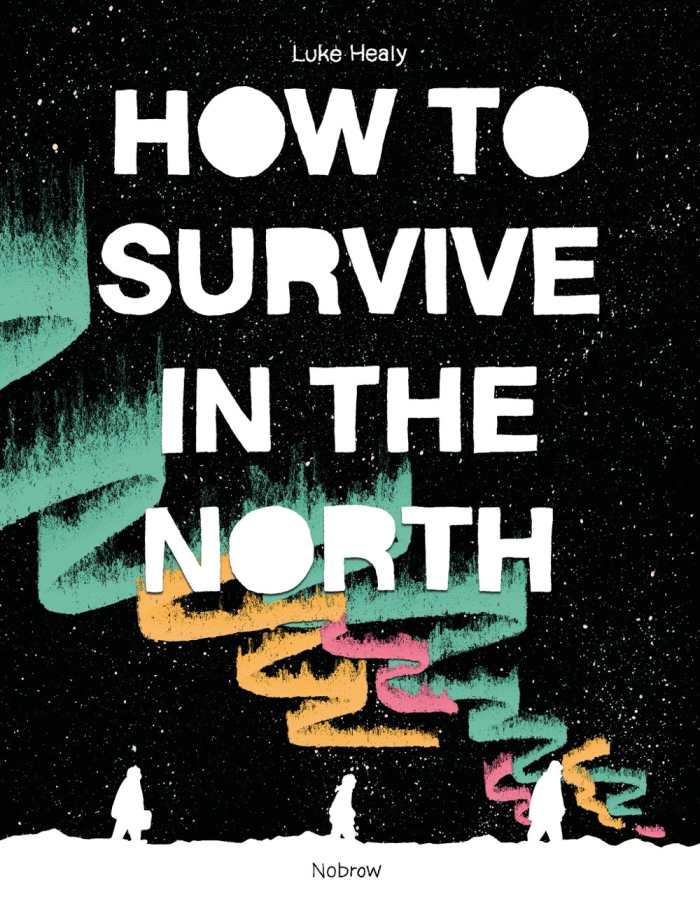
Luke Healy
Nobrow Press
Hardcover $22.95 (192pp)
978-1-910620-06-9
Luke Healy weaves the mesmerizing but disparate tales of two expeditions to the Arctic a hundred years ago, and a modern-day college professor facing a scandal, in his stunning debut graphic novel, How to Survive in the North.
Healy’s art and narrative style is elegant, reminiscent of Herge’s classic Tintin books, but while the Arctic adventures somewhat fit that mold, the contemporary story—a professor’s affair with a student, and its repercussions—is more adult fare, which might bring into question the book’s recommended readership being listed as Grade 4 and up.
Each of the stories is compelling. The Arctic adventures are based on the real-life excursions of Ada Blackjack and Robert Bartlett, while Sully the college professor’s midlife crisis is a fictional tale.
Healy can express a multitude of emotions in one panel, or in a series of panels, as when Ada, an Eskimo woman alone and desperate for food, faces a polar bear near her tent. She prepares to shoot the bear until she notices its cub nearby, which sparks her own maternal instincts for the sick son she left behind.
The interconnections of the stories are sometimes subtle, but always strong, and as Sully finds meaning in the accounts of the Arctic expeditions, muttering, “They should have known better!” and “They didn’t think about the consequences,” it’s only natural that he should see the similarities to his own situation.
Healy’s first graphic novel is an impressive one, and highly recommended.
PETER DABBENE (November 28, 2016)
The Manga Guide to Regression Analysis
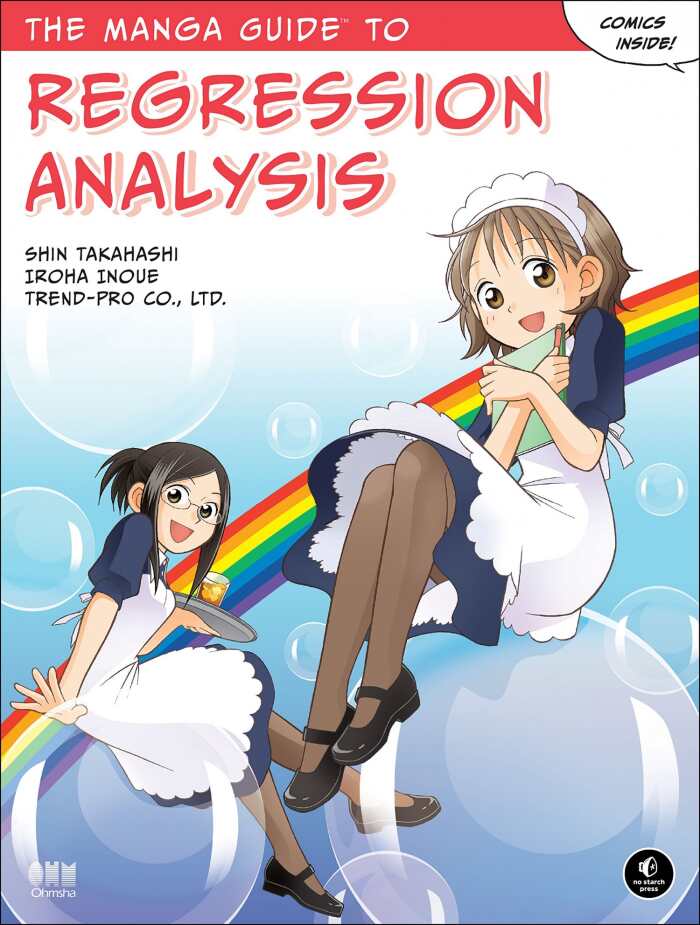
Shin Takahashi
No Starch Press
Softcover $24.95 (232pp)
978-1-59327-728-4
Buy: Local Bookstore (Bookshop)
Statistics students plagued by the complexities of regression analysis will delight in discovering The Manga Guide to Regression Analysis, part of No Starch Press’s Manga Guide series.
Originally published in Japan over a decade ago, The Manga Guide to Regression Analysis has been successfully translated into English—a detail that might not seem important in the math-centric world of regression analysis, but one that’s critical in this book, due to the simple but engaging story line that frames all the technical talk.
Miu and Risa, two young tea-shop workers, are quickly introduced before Risa agrees to help her friend understand regression analysis. Together, they calculate the expected sales of tea depending on the high temperature of the day and, later, create sales projections for a proposed new bakery location. While the narrative presentation definitely aids comprehension, the book acknowledges that readers should first read The Manga Guide to Statistics in order to fully grasp the concepts, and the math, that follow.
Like Larry Gonick’s Cartoon Guide to Statistics, The Manga Guide to Regression Analysis similarly helps students grasp the meaning of R-squared, correlation coefficients, and null hypotheses—terms that have proved to be the bane of many students’ college careers. While it may not be enough to supplant a good teacher or a well-written textbook, The Manga Guide to Regression Analysis adds another dimension to the subject and provides another angle from which students can approach it.
PETER DABBENE (November 28, 2016)
The Osamu Tezuka Story
A Life in Manga and Anime

Toshio Ban
Tezuka Productions
Frederik L. Schodt, translator
Stone Bridge Press
Softcover $29.95 (928pp)
978-1-61172-025-9
Buy: Local Bookstore (Bookshop)
Osamu Tezuka was a towering figure in Japanese manga and anime, referred to as the God of Manga and Japan’s Walt Disney. Despite his importance in the development of these fields, Tezuka’s name and work are not well known outside his native country, a situation that Toshio Ban and translator Frederik L. Schodt seek to remedy with the monumental manga biography The Osamu Tezuka Story.
At over 900 pages plus appendices, The Osamu Tezuka Story might seem imposing, but while the account is thorough and well-detailed, Ban always moves it along engagingly, making use of one of Tezuka’s characters, Mustachio, to narrate. There are amusing scenes of editors attempting to monitor Tezuka and ensure that he meets the deadlines for their manga publications, but when Ban shows Tezuka escaping from windows or taking a train to a distant hotel for some solitude, it’s not just exciting and funny, it also demonstrates the tremendous pressure Tezuka was under to meet his commitments. Beginning with Tezuka’s childhood, the book illuminates the critical ingredients of his career, including his medical degree, his business ventures, his passion for experimentation, and, above all, his relentless work ethic.
Drawing on Tezuka’s own manga biographies (I Am A Manga Artist, and others) as well as outside references, Ban and his partners have created a landmark guide to the life and accomplishments of a master.
PETER DABBENE (November 28, 2016)
Equinoxes
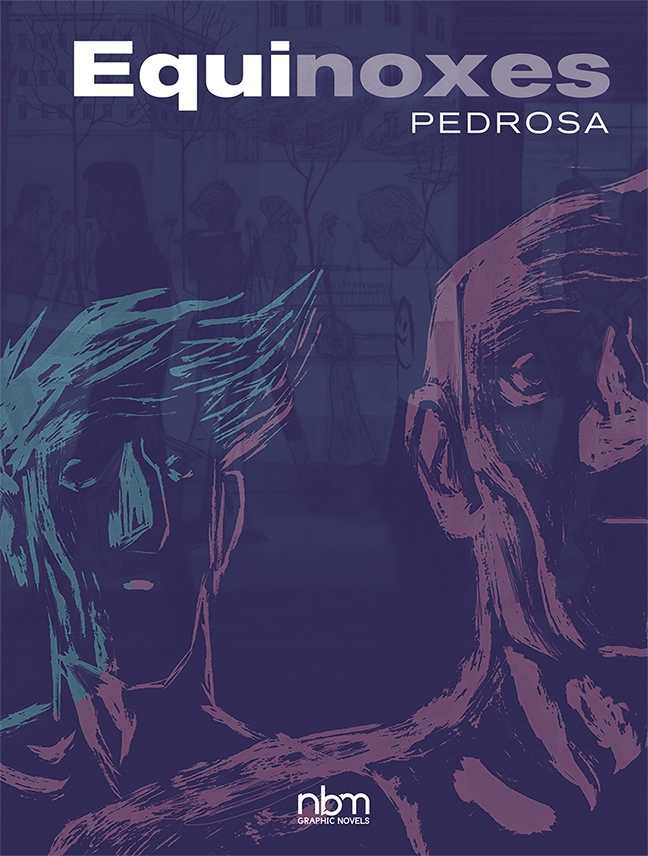
Cyril Pedrosa
NBM Publishing
Hardcover $44.99 (336pp)
978-1-68112-080-5
Buy: Local Bookstore (Bookshop)
Cyril Pedrosa follows up his well-regarded graphic novel Portugal with the ambitious and beautifully drawn Equinoxes, which combines the distinct stories of several modern-day individuals, and the wordless tale of a boy living thousands of years before, into a transcendent mosaic that exceeds the sum of its parts.
The book is divided into sections titled “Autumn,” “Winter,” “Spring,” and “Summer,” and this, combined with the weather shown as the characters go about their lives, refers back to the title and helps to anchor the book. But Pedrosa links his stories in other ways, primarily through a photographer who snaps shots of people who catch her interest. The personal lives of her subjects are further revealed through the narrative, which Pedrosa delivers in pages of art and words, as well as occasional stand-alone text.
Before Pedrosa turned to graphic novels, he gained experience working on Disney animated films, and in Equinoxes, he uses several styles effectively, including a simple, clean, Disney-like style for the caveboy scenes, and a sketchier, grittier, more complex look for the modern-day segments. Pedrosa’s use of color, in a diverse palette to indicate mood, is equally noteworthy throughout the book.
Equinoxes is an enjoyable graphic novel to read through, thanks to Pedrosa’s always appealing artwork, but it’s more difficult to absorb its entirety without a second, deeper perusal. Equinoxes, then, stands worthy of recognition for satisfying the sometimes overused label of “comics as literature.”
PETER DABBENE (November 28, 2016)
Peter Dabbene

